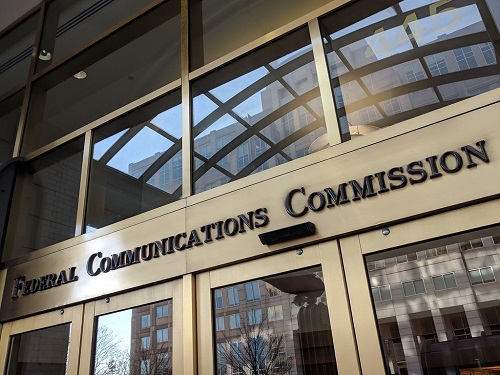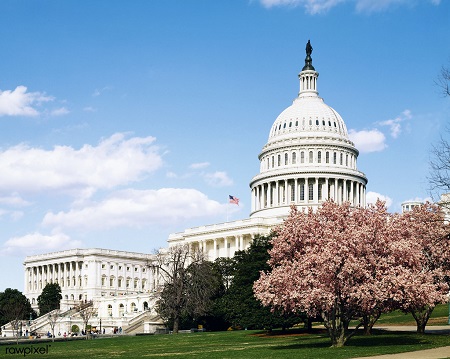
Fast, affordable Internet access for all.

As digital inclusion practitioners and broadband-for-all advocates continue to push Congress to save the Affordable Connectivity Program (ACP), 22.5 million Americans now enrolled in the program are weeks away from being officially notified of its pending termination as ACP funds are on track to be depleted by the end of April.
The looming demise of the ACP – which provides income-eligible households with a $30 monthly voucher to pay for pricey Internet service bills ($75/month for Tribal citizens living on reservations) – comes at a crucial moment in the rollout of the “Internet For All” initiative. All 56 States and U.S. territories are poised to receive nearly $45 billion in broadband expansion funds from the bipartisan infrastructure law over the next year.
Separate from the BEAD program and Digital Equity Act funding, the bipartisan infrastructure law also established the ACP with a $14.2 billion allocation. At current enrollment rates, the program disburses about $650 million per month to Internet service providers (ISPs).

Broadband providers and digital equity advocates alike have been sounding the alarm for months that the end of ACP would be a major setback in the national effort to bridge the nation’s stubborn digital divide once and for all, prompting a bipartisan group of U.S. Senators and Congressional Representatives to file last minute legislation earlier this week proposing Congress allocate enough funds ($7 billion) to extend the program to the end of 2024.
Given the increasingly likely chance Congress will not act before the fund is depleted, the Federal Communications Commission (FCC) and ISPs who have participated in the program since its inception two years ago are turning their focus to how to wind down the benefit in a way that adequately notifies enrollees, mitigates service disruptions for households who intend to keep their Internet service even without the voucher, and protect households who can't afford service from being stuck with large bills.
FCC Unveils Wind Down Plan
On Thursday, the FCC published its order of requirements and guidance for the wind down of ACP.
“We currently project that the last month for which the ACP can fully reimburse providers for the ACP benefits provided to enrolled households is April 2024. Should Congress not appropriate additional money, the existing funds will be exhausted, the Commission will have to end the ACP, and providers will stop providing discounts to enrolled households,” the notice said.
The agency announced it will freeze new ACP enrollment on Feb. 7. The wind down notice then goes on to detail the timeline participating ISPs should follow in informing their ACP-enrolled subscribers.
The notice says ISPs should provide at least three notifications to ACP-enrolled subscribers before the program ends, with the first notice alerting subscribers “about the possibility of program termination and the potential impact on their broadband service and bills … as soon as practicable, but no later than 14 days after the release of this Order.”

The second and third required notices should go beyond alerting ACP beneficiaries of the possible termination of the program and include “(1) the date of the last bill on which the full ACP benefit will be applied and (2) the amount that the household will be billed for the service once the full ACP benefit is no longer available and/or that the household will be subject to the provider’s undiscounted rates and general terms and conditions after the end of the ACP.”
The last two notices should also “remind ACP households of their ability to change their service and/or to opt out of continuing their service at the end of the ACP,” the order said.
The FCC further states that ACP households need to explicitly “opt-in” to keep their non-discounted service, an approach the agency says “reduces the risk of subjecting a large percentage of ACP households to service disruption and avoids increasing administrative burdens on service providers and households (as well as) guard against unintended disconnections from broadband service for households that have demonstrated a willingness to pay for broadband without the ACP benefit, reduce consumer confusion and frustration, and mitigate bill shock.”
You can read the FCC's wind down fact sheet here.
The Politics of ACP
As the FCC and ISPs prepare to notify its ACP-enrolled subscribers of the looming termination of the program, some providers have already begun to alert their subscribers while encouraging them to call on their Congressional rep to save the program.
Ariane Schaffer, Public Policy and Government Affairs Manager for Google Fiber tells ILSR the company plans “to email our customers educating them about the potential for funding to run out and ways to engage Congress, including asking them to vote for the ACP Extension Act.”

Schaffer is referring to the legislative Hail Mary announced earlier this week with the introduction of the Affordable Connectivity Program Extension Act, which proposes Congress allocate $7 billion to keep the program running until the end of 2024.
In filing the bill, the six lawmakers sponsoring the legislation – U.S. Sens. Peter Welch (D-Vt.), JD Vance (R-Ohio), Jacky Rosen (D-Nev.), Kevin Cramer (R-N.D.); and U.S. Representatives Yvette D. Clarke (D-NY) and Brian Fitzpatrick (D-PA) – were in agreement that the ACP has been a digital lifeline for financially-struggling constituents.
Among the beneficiaries of the program, the lawmakers said, include “over 800,000 veterans, one million college students, 3.1 million families with a K-12 student receiving free or reduced-price lunch, and 5 million seniors across the United States.”
But in a deeply partisan Congress during a Presidential election year, there’s little optimism on the bill’s prospects for getting passed.
Inside the beltway, a number of GOP Congressional members appear reluctant to extend the program, as they raise concerns about fraud and "waste." But some observers say that even if those concerns were thoroughly addressed, extending the ACP may be non-starter for GOP leaders leery of giving the Biden administration a political victory during an election year, even though ACP enrollees in Republican Congressional districts outnumber those living in Democratic districts.
According to our ACP dashboard, which uses official Universal Service Administration figures to track enrollment nationwide, there are 25.4 million households in Democratic districts that are eligible for ACP while 27.6 million are ACP eligible in Republican districts. As for the number of enrolled households, the number of ACP recipients in Republican districts (11,130,505) slightly exceeds the number of enrolled households in Democratic districts (10,902,628) with $35 million more in ACP subsidies going to GOP Congressional districts than to Democratic districts.
Long Term Funding Solution In Plain Sight
A growing number of digital inclusion advocates, broadband experts, and industry groups say the stop-gap measure embodied in the Affordable Connectivity Program Extension Act should be passed to buy Congress time to figure out a permanent funding solution.
Some point to Universal Service Fund (USF) reform, along the lines laid out by Jonathan Spalter, President and CEO of the broadband trade group USTelecom, which represents the nation’s largest telecom providers.

“Congress abandoning ACP funding a mere two years into its existence would be profoundly disruptive to the country’s digital affordability and equity goals. Immediate action is necessary on Capitol Hill to provide stop-gap funding to keep the program operational while a permanent fix is put in place,” Spalter wrote earlier this week.
The USF, he noted, was originally established to help low-income households and rural Americans pay for landline phone service. However, the system needs to be modernized especially considering that nearly two-thirds of Americans have gotten rid of their landlines.
Spalter suggests that “funding for both the ACP and USF can be stabilized for the long haul in one fell swoop by bringing Big Tech to the table as long-overdue contributors to the nation’s shared commitment to helping low-income families get – and stay – online.”
Other broadband experts like Conexon partner Jonathan Chambers, whose company builds and operates fiber networks in rural communities across the nation, tells ILSR that while the USF should be modernized, he is not convinced it will happen anytime soon. However, he said, a more practical solution would be to tweak the USF’s existing Lifeline program.
In a blog post published today, Chambers first outlined what he sees as the primary reasons the ACP program “is financially out of control.”
“1. Congress set the ACP discount benefit at $30 per month, and then the Biden Administration strongly encouraged companies to create a $30 broadband plan so services would be free to the consumer. The FCC’s experience with other Universal Service programs has demonstrated that free services subsidized by the public often spiral out of control.”
“2. While the Lifeline program addresses the poorest households, ACP set the eligibility threshold to twice the poverty level, making tens of millions more households now eligible for a low-income benefit.”
“3. Most of the ACP money has gone to mobile services, not residential broadband. Over a decade ago, Lifeline support for mobile services overwhelmed and nearly killed that program. ACP is repeating a knowable history.”
His proposed solution is equally straight-forward. Replace ACP with a new Lifeline program that:
“1. Increases eligibility to 150% of the poverty line.”
“2. Increases the Lifeline subsidy from $9.25 per month to $30 per month for those at or below the poverty line and $20 per month for those at or below 150% of the poverty line.”
“3. Restricts eligibility to residential fixed broadband and eliminates subsidies for mobile services.”
Finally, Chambers notes, fixing the ACP is particularly important for rural communities – something that has become apparent having conducted hundreds of detailed feasibility studies for electric cooperatives looking to offer broadband service.

“We review the demographics of the service territory, including the median household income,” he noted. “In the studies we’ve completed for electric co-ops (nearly 300 to date), more than 50% of co-op members qualify for ACP. Therefore, rural America has a stake in the sustainability of ACP.”
As we have previously written, should Congress extend the ACP program and find a long term funding solution (which we support), it still doesn’t address the structural issues behind the high-cost of Internet service.
Giving money to regional monopolies to temporarily lower the high prices they created through a sustained, multi-decade assault on competition isn’t genuinely fixing the underlying problem of broadband affordability, one of the top obstacles to expanding access and adoption. Political and policy rhetoric about the ‘digital divide’ often excludes solutions for the kind of harmful regional monopolization and industry consolidation that makes it difficult for smaller broadband competitors to survive.
ILSR studies have shown how subsidies alone aren’t capable of addressing the root cause(s) of broadband inequity. Real solutions have to address concentrated monopoly power and its impact on competition. While programs like the ACP are hugely beneficial for struggling Americans, they remain a band-aid for a much deeper problem.
A more equitable and sustainable path forward requires developing policies that take direct aim at monopoly power, as well as supporting the more than 900 communities driving popular, locally-owned broadband alternatives.
Below you can watch an FCC video on the ACP wind down and one of several videos from the National Digital Inclusion Alliance (NDIA) that highlights ACP beneficiaries and what the program means for them:
Header image of Price Increase sign courtesy of QuoteInspector.com, Attribution-NoDerivs 4.0 International
Inline image of FCC building courtesy of Rob Pegoraro, Attribution-NonCommercial-ShareAlike 2.0 Generic
Inline image of woman frustrating in front laptop courtesy of Andrea Piacquadio
